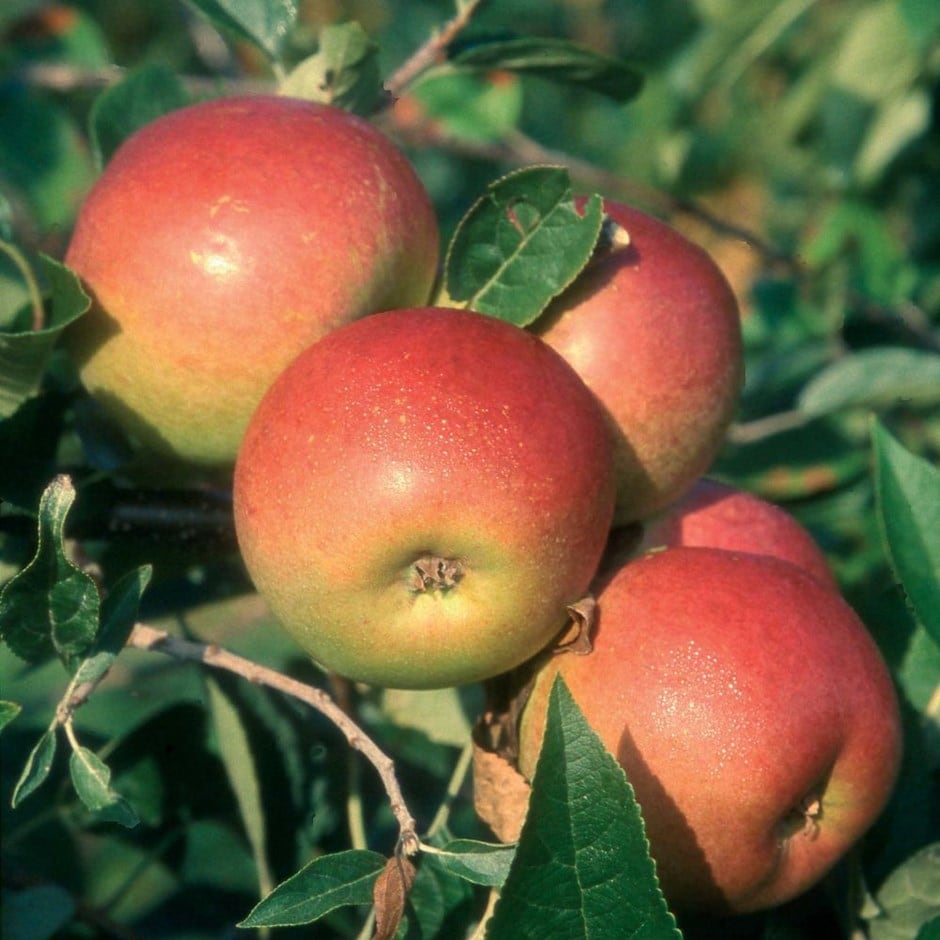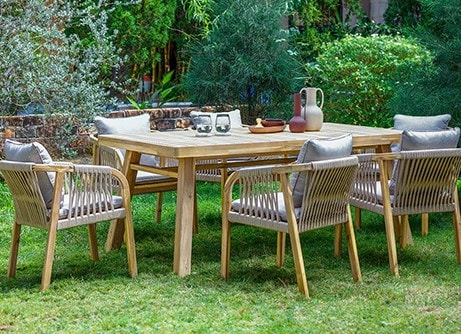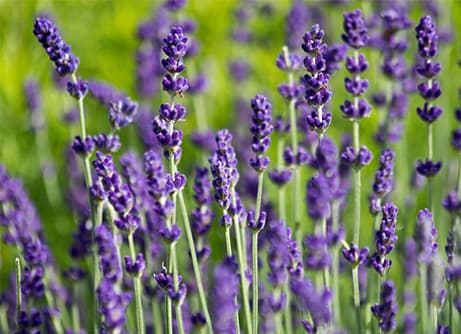apple 'Laxton's Superb'
eating / dessert apple (syn. Malus domestica 'Superb' )
20% off


Bred by the renowned Laxton Brothers in Bedford in 1897, this delicious eating apple has a purple flushed red and green skin, and a flavour that is similar to 'Cox's Orange Pippin', which is one of its parents.
Sweet and aromatic fruits that ripen in October, the flesh of apple 'Laxton's Superb' is firm and succulent with a greenish flush. A top old-fashioned cultivated variety that is reliably hardy in most areas, but it may be a biennial bearer.
If you choose the top worked option, the crown of this small tree has been grafted onto the upright stem of the rootstock at a height of 70cm, which will limit the eventual height. Perfect for a small garden or growing in a large pot with a loam-based (John Innes) compost.
Pollination information: This apple belongs to pollination group 4, however it is partially self fertile, so does not need a pollinating partner toproduce a crop of apples. For a bumper crop, it can be cross-pollinated with other apples in this group.
Sweet and aromatic fruits that ripen in October, the flesh of apple 'Laxton's Superb' is firm and succulent with a greenish flush. A top old-fashioned cultivated variety that is reliably hardy in most areas, but it may be a biennial bearer.
If you choose the top worked option, the crown of this small tree has been grafted onto the upright stem of the rootstock at a height of 70cm, which will limit the eventual height. Perfect for a small garden or growing in a large pot with a loam-based (John Innes) compost.
Pollination information: This apple belongs to pollination group 4, however it is partially self fertile, so does not need a pollinating partner toproduce a crop of apples. For a bumper crop, it can be cross-pollinated with other apples in this group.
How to care for apple Laxton's Superb:
When planting your apple tree, prepare a hole up to three times the diameter of its root system. Fork over the base of the pit in readiness, incorporating plenty of organic matter into the backfill and planting hole. Place the plant in the planting hole and carefully refill, firming the soil around the roots to eliminate air pockets. Insert stake at this point if required.
Avoiding frozen and waterlogged soil, trees should be planted out as they arrive. If you've ordered a bare root tree, soak the roots in a bucket of water for half an hour prior to planting - or if this is not possible, they can be heeled in temporarily, covering their roots with soil, or potted up.
Keep the base of the tree weed free, fertilise at the beginning of each year water regularly during hot, dry spells.
The main prune should be done in the winter as long as it isn't frosty or freezing. Take out the 3D’s (dead, dying and diseased wood) and create an open shape. Then reduce the leaders back by a third. Aim to create an airy structure without any crisscrossing branches.
In August summer prune. Shorten any side shoots (or laterals) which are longer than 20cm back to three leaves. This will allow the sun to ripen the fruit and encourage more fruit buds. Make sure that the growth you’re cutting away feels firm to the touch.
Avoiding frozen and waterlogged soil, trees should be planted out as they arrive. If you've ordered a bare root tree, soak the roots in a bucket of water for half an hour prior to planting - or if this is not possible, they can be heeled in temporarily, covering their roots with soil, or potted up.
Keep the base of the tree weed free, fertilise at the beginning of each year water regularly during hot, dry spells.
The main prune should be done in the winter as long as it isn't frosty or freezing. Take out the 3D’s (dead, dying and diseased wood) and create an open shape. Then reduce the leaders back by a third. Aim to create an airy structure without any crisscrossing branches.
In August summer prune. Shorten any side shoots (or laterals) which are longer than 20cm back to three leaves. This will allow the sun to ripen the fruit and encourage more fruit buds. Make sure that the growth you’re cutting away feels firm to the touch.
Flowering period:
- Jan
- Feb
- Mar
- Apr
- May
- Jun
- Jul
- Aug
- Sep
- Oct
- Nov
- Dec
Eventual height:
1.8m
Eventual spread:
1.8m
Position:
Full sun
Rate of growth:
Average
Soil:
Moderately fertile, moist, well-drained soil
Hardiness:
Fully hardy
-
This plant is deciduous so it will lose all its leaves in autumn, then fresh new foliage appears again each spring.
Product options
Add to basket

12 litre pot | M27 | top worked at 70cm
was £119.99
now £95.99
In stock
(shipped within 3-5 working days)
(shipped within 3-5 working days)

9 litre pot | MM106 root stock | 1.2m
was £49.99
now £39.99
available to order from autumn

9 litre pot | M26 root stock | 1.2m
£49.99
available to order from autumn

bare root | MM106 root stock | 1.2m tall
was £44.99
now £35.99
available to order from autumn









